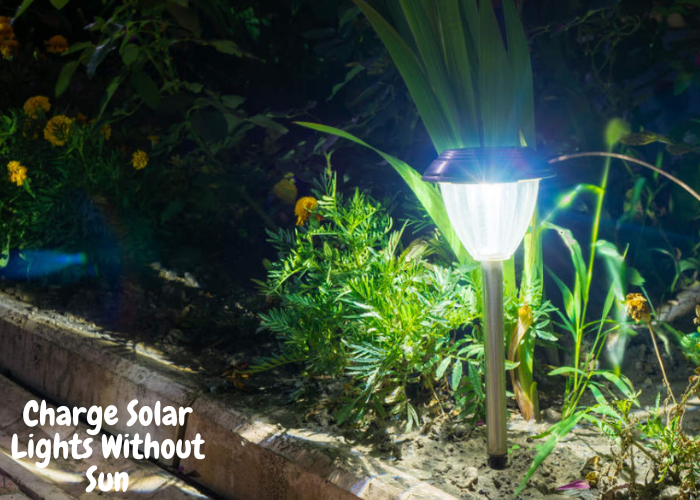Solar lights have become a popular and environmentally friendly option for outdoor lighting. They harness the power of the sun to charge during the day and provide illumination at night. However, what do you do when there’s no sun? In this article, we will explore alternative methods to charge solar lights without the sun and discuss the best practices for doing so.
How do Solar Lights Work?
Before we delve into alternative methods, let’s first understand how solar lights work. Solar lights consist of several key components: a solar panel, a rechargeable battery, an LED light, and a light sensor.
During the day, the solar panel converts sunlight into electricity, which is stored in the rechargeable battery. As the sun sets and darkness falls, the light sensor triggers the LED light to turn on, utilizing the stored energy.
Limitations of Solar Lights without Sun
While solar lights are an excellent and sustainable lighting solution, they do have limitations when it comes to charging without the sun. Cloudy days, winter months with less daylight, and shaded areas can significantly reduce the amount of sunlight reaching the solar panel. This reduces the charging capacity and may result in dimmer or shorter-lasting light output during the night.
Alternative Methods to Charge Solar Lights Without Sun
Thankfully, there are alternative methods available to charge solar lights without relying solely on the sun. Let’s explore some of these methods.
Charging Solar Lights with Artificial Light Sources
One method is to charge solar lights using artificial light sources. Indoor lighting or outdoor artificial lights can provide the necessary light energy to charge the solar panel. However, it is important to ensure that the light source is bright enough and positioned close to the solar panel for effective charging. Additionally, the duration of charging may be longer compared to direct sunlight, so it’s recommended to keep the lights on for extended periods.
Charging Solar Lights Using a Power Bank
Another alternative is to use a power bank to charge solar lights. This method is particularly useful when you’re on the go or during emergencies. Simply connect the solar light to the power bank using the appropriate charging cable.
Ensure that the power bank has sufficient charge to transfer energy to the solar light. Keep in mind that the power bank should be fully charged beforehand to provide an effective charging solution.
Using Solar Panels to Charge Solar Lights Indoors
If you want a more long-term solution for charging solar lights indoors, consider investing in a solar panel. Solar panels can be installed on rooftops or placed near windows to capture sunlight.
Connect the solar panel to the solar light using the appropriate cables, and position the panel in an area that receives ample sunlight. This method allows for consistent and reliable charging, even when there’s no sun.
Best Practices for Charging Solar Lights Without Sun
To ensure optimal charging without sun, here are some best practices to keep in mind:
- Clean the solar panel regularly to remove dirt, dust, or debris that can obstruct sunlight.
- Position the solar panel in a location that receives maximum sunlight, away from obstructions.
- Use bright and energy-efficient LED bulbs to maximize the light output during the night.
- If using artificial light sources, ensure they emit a sufficient amount of light and are positioned close to the solar panel.
- Consider investing in high-quality solar lights with efficient solar panels and rechargeable batteries for better performance.
Troubleshooting Common Issues with Solar Lights
Sometimes, even with the best practices in place, solar lights may encounter issues. Here are some common problems and their possible solutions:
- Dim or flickering light: Clean the solar panel and ensure it is receiving enough sunlight.
- Short battery life: Replace the rechargeable battery with a new one if it is not holding a charge.
- Light not turning on: Check the light sensor and ensure it is not obstructed or damaged.
- Inconsistent charging: Verify that the solar panel is properly connected to the solar light and that the cables are not damaged.
Conclusion
While solar lights primarily rely on the sun for charging, there are alternative methods available to charge them without direct sunlight. Charging solar lights with artificial light sources, using a power bank, or utilizing solar panels indoors are effective ways to keep your solar lights powered even when the sun is not shining. By following best practices and troubleshooting common issues, you can enjoy the benefits of solar lighting regardless of the weather or location. Embrace the power of the sun and illuminate your surroundings sustainably with solar lights.
